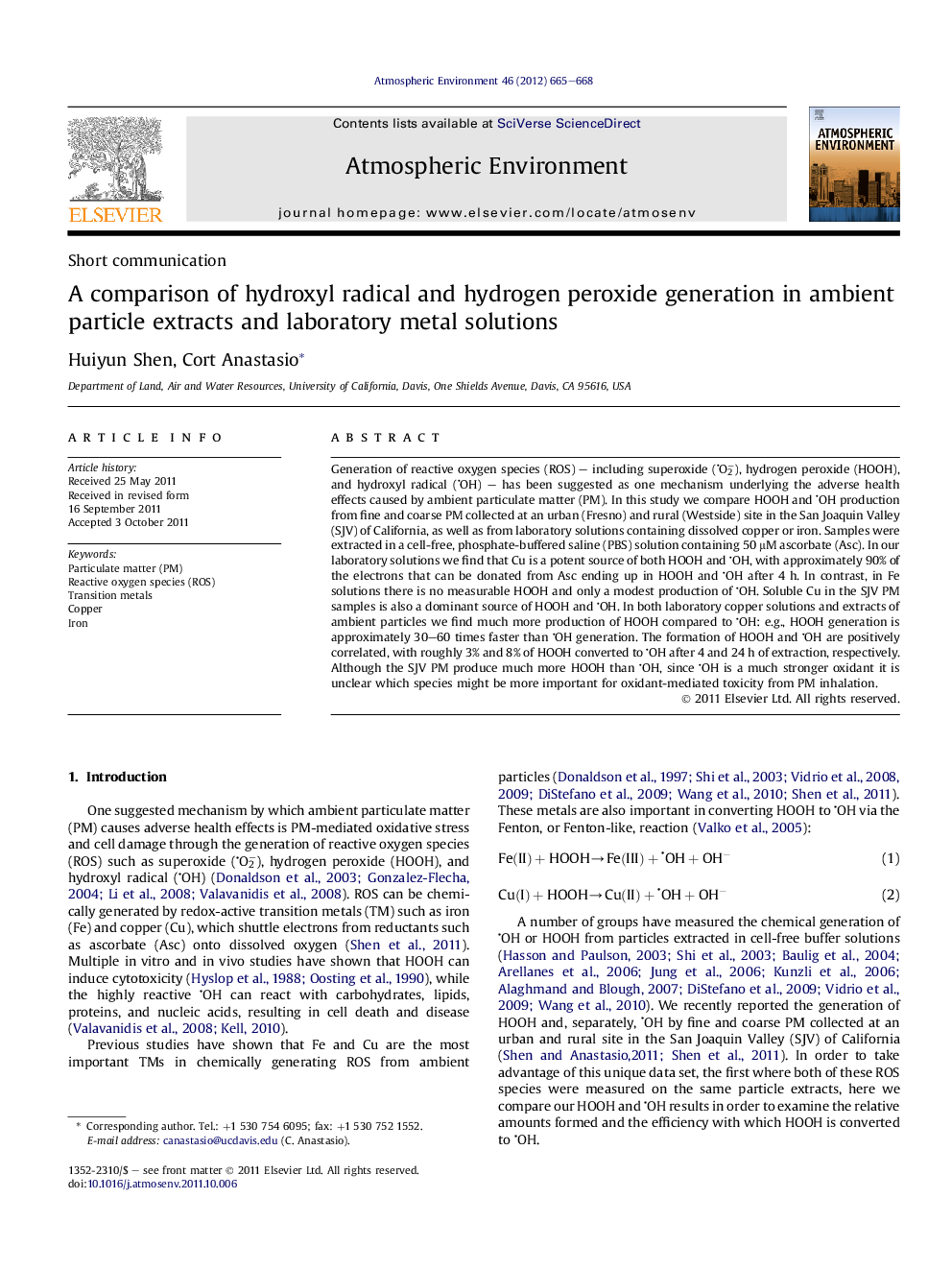| Article ID | Journal | Published Year | Pages | File Type |
|---|---|---|---|---|
| 4439300 | Atmospheric Environment | 2012 | 4 Pages |
Generation of reactive oxygen species (ROS) – including superoxide (O2−), hydrogen peroxide (HOOH), and hydroxyl radical (OH) – has been suggested as one mechanism underlying the adverse health effects caused by ambient particulate matter (PM). In this study we compare HOOH and OH production from fine and coarse PM collected at an urban (Fresno) and rural (Westside) site in the San Joaquin Valley (SJV) of California, as well as from laboratory solutions containing dissolved copper or iron. Samples were extracted in a cell-free, phosphate-buffered saline (PBS) solution containing 50 μM ascorbate (Asc). In our laboratory solutions we find that Cu is a potent source of both HOOH and OH, with approximately 90% of the electrons that can be donated from Asc ending up in HOOH and OH after 4 h. In contrast, in Fe solutions there is no measurable HOOH and only a modest production of OH. Soluble Cu in the SJV PM samples is also a dominant source of HOOH and OH. In both laboratory copper solutions and extracts of ambient particles we find much more production of HOOH compared to OH: e.g., HOOH generation is approximately 30–60 times faster than OH generation. The formation of HOOH and OH are positively correlated, with roughly 3% and 8% of HOOH converted to OH after 4 and 24 h of extraction, respectively. Although the SJV PM produce much more HOOH than OH, since OH is a much stronger oxidant it is unclear which species might be more important for oxidant-mediated toxicity from PM inhalation.
